Rose of Sharon Hibiscus 'Lohengrin'

ABOUT
The Hibiscus 'Lohengrin' is a striking plant known for its showy, large flowers that can make it a centerpiece in any garden setting. These blooms exhibit a breathtaking range of colors, often displaying a soft, peachy pink hue with a deeper pink to red center, giving them a dramatic, eye-catching contrast. The petals are broad and overlap generously, giving the flower a full and robust appearance. They are delicate yet have a certain tropical allure, with a slightly ruffled edge that adds to their charm. The heart of each Hibiscus 'Lohengrin' flower is marked by a prominent and elongated pollen-tipped stamen that extends outward, which is a distinctive feature in many hibiscus varieties. This protruding stamen is a contrast to the soft petals, providing not only an aesthetic complement but also serving as a landing strip for pollinators like bees and hummingbirds. The foliage of Hibiscus 'Lohengrin' is equally lush, characterized by green leaves that are both glossy and broad, with a slightly toothed edge. The leaves provide a rich backdrop for the flowers, complementing their vibrant colors, and help to create a dense, green canvas even when the plant is not in bloom. The overall appearance of Hibiscus 'Lohengrin' is tropical and lush, with a luxurious and exotic ambiance that makes it well-suited for gardens aiming to create a retreat-like feel. It blooms over a long period, often from late spring through to the end of summer, providing an extended show of color and vibrancy.
About this plant
 Names
NamesSynonyms
Rose Mallow, Swamp Mallow, Hardy Hibiscus.
Common names
Hibiscus 'Lohengrin'.
 Toxicity
ToxicityTo humans
Generally, Hibiscus plants are not considered toxic to humans. They are often used in teas and as edible garnishes. However, if Hibiscus 'Lohengrin', a specific cultivar, has any uncommon toxic properties, they are not well-documented in common sources as of my knowledge cutoff date. It is always wise to exercise caution and avoid ingesting plants that are not confirmed to be safe or if you do not have the correct identification of the plant.
To pets
Hibiscus, including Hibiscus 'Lohengrin', is generally not considered highly toxic to pets such as dogs and cats. Ingesting parts of the plant may sometimes cause mild gastrointestinal upset, including vomiting or diarrhea, in some pets due to the plant's fibrous nature. If a pet ingests a large amount of the plant, it's best to monitor them and consult a veterinarian if any concerning symptoms arise. However, the hibiscus plant is not typically associated with severe toxicity in pets.
 Characteristics
CharacteristicsLife cycle
Perennials
Foliage type
Deciduous
Color of leaves
Green
Flower color
Pink
Height
5 feet (1.52 meters)
Spread
4 feet (1.22 meters)
Plant type
Shrub
Hardiness zones
5
Native area
Asia
Benefits
 General Benefits
General Benefits- Ornamental Value: Hibiscus 'Lohengrin' is known for its large, showy flowers that can enhance the aesthetic appeal of gardens and landscapes.
- Attracts Pollinators: The plant's vibrant flowers attract butterflies and bees, promoting pollination in the garden.
- Drought Tolerance: Once established, hibiscus can tolerate periods of drought, making it suitable for xeriscaping and water-efficient gardens.
- Grows in Various Soils: This hibiscus variety can thrive in a range of soil types, provided they are well-draining.
- Heat Tolerance: Hibiscus 'Lohengrin' is tolerant of high temperatures, making it suitable for warm and tropical climates.
- Privacy Screen: The shrub can be used to create a natural privacy barrier or hedge when planted in a row.
- Fast Growth: The plant has a relatively quick growth rate, allowing for rapid establishment and quick visual impact.
 Medical Properties
Medical Properties- This plant is not used for medical purposes.
 Air-purifying Qualities
Air-purifying QualitiesThis plant is not specifically known for air purifying qualities.
 Other Uses
Other Uses- Edible Delight: The flowers of the hibiscus can be used to make a flavorful and colorful addition to salads.
- Natural Dye: The vibrant petals of the hibiscus flower can be used to create natural dyes for fabrics, hair, and even cosmetics.
- Shoe Polish: Hibiscus leaves, when rubbed directly onto shoes, can provide a natural shine to leather.
- Art Supplies: Crushed hibiscus petals can be mixed with water to create a natural paint for artistic endeavors.
- Garden Mulch: Decomposing hibiscus plants can be used as mulch to enrich the soil and protect against weeds.
- Paper Making: Hibiscus fibers from the stems and leaves can be incorporated into paper making for a textured, decorative finish.
- Floral Garnish: Use whole or partial hibiscus flowers to adorn and enhance the presentation of desserts and cocktails.
- Soap Making: Hibiscus extract can be added to homemade soaps for fragrance and its skin-toning properties.
- Tea Serving: Dried hibiscus flowers can be floated in a glass teapot for a visually stunning tea service.
- Cultural Rituals: In some cultures, hibiscus flowers are used in ceremonies and rituals for their symbolic meanings of beauty and femininity.
Interesting Facts
 Feng Shui
Feng ShuiThe Hibiscus is not used in Feng Shui practice.
 Zodiac Sign Compitability
Zodiac Sign CompitabilityThe Hibiscus is not used in astrology practice.
 Plant Symbolism
Plant Symbolism- Delicate Beauty: The hibiscus, with its large, colorful blossoms, is often associated with delicate and exquisite beauty, representing an appreciation for the fleeting and beautiful moments in life.
- Femininity: In various cultures, the hibiscus flower symbolizes femininity and womanhood, due to its soft, graceful appearance and traditionally feminine colors.
- Warmth and Hospitality: Particularly in Hawaiian culture, the hibiscus is a symbol of hospitality, used to welcome guests and convey friendliness.
- Carpe Diem (Seize the Day): Due to its short-lived blooms, which typically last for only a day, the hibiscus serves as a reminder to seize the day and make the most out of every moment.
- Fame and Personal Glory: The hibiscus is sometimes associated with fame, glory, and a high reputation, possibly attributed to its showy flowers that attract attention.
 Water
WaterHardy Hibiscus plants, including the 'Lohengrin', should be watered deeply and thoroughly, allowing the water to penetrate the soil to reach the root system. During the growing season, water the plant at least once a week with about 1 to 1.5 gallons of water. During hot and dry periods, the frequency of watering may need to increase to twice a week. Ensure that the soil is moist but not waterlogged, as Hardy Hibiscus prefers well-drained soil. Adjust watering based on rainfall and temperature, reducing the amount during cooler, wetter months to avoid overwatering.
 Light
LightHardy Hibiscus, including the 'Lohengrin', thrives in full sun to partial shade. To promote optimal growth and flowering, place the plant in an area where it will receive at least 6 hours of direct sunlight each day. However, in extremely hot climates, some afternoon shade can help protect the plant from heat stress. The best spot for the plant is a south-facing or west-facing location that meets these light requirements.
 Temperature
TemperatureHardy Hibiscus 'Lohengrin' can tolerate a range of temperatures, but it grows best in conditions between 60 and 90 degrees Fahrenheit. The plant can withstand minimum temperatures down to 20 degrees Fahrenheit but should be protected from frost and extreme cold. Ideal temperature conditions are warm and stable temperatures within the 60 to 90 degrees Fahrenheit range to encourage healthy growth and blooming.
 Pruning
PruningPrune Hardy Hibiscus 'Lohengrin' to maintain shape, encourage bushiness, and remove dead or damaged stems, which promotes healthy growth and better flowering. The best time for pruning is early spring, before new growth begins. Cut the plant back by about one-third, ensuring to make clean cuts just above a set of leaves. Pruning can be done annually, and any spent flowers or seed pods can be removed throughout the growing season to encourage continuous blooming.
 Cleaning
CleaningAs needed
 Soil
SoilThe best soil mix for Hibiscus, commonly known as Rose Mallow, is well-draining and fertile with a slightly acidic to neutral pH between 6.0 and 7.0. An ideal mix can be achieved by combining two parts peat moss or coco coir, one part perlite or vermiculite, and one part compost to ensure nutrients and proper drainage.
 Repotting
RepottingRose Mallow generally needs to be repotted every 1-2 years as they can outgrow their pots. It's best to repot in the spring just before the growing season begins, making sure to choose a pot that's only one size larger than the current one to prevent overwatering.
 Humidity & Misting
Humidity & MistingRose Mallow thrives best in high humidity levels, ideally between 60% and 70%. To maintain these conditions, especially indoors, use a humidifier or regularly mist the leaves while avoiding the flowers.
 Suitable locations
Suitable locationsIndoor
Place Rose Mallow in bright, indirect light and maintain high humidity.
Outdoor
Grow in full sun to partial shade and protect from strong winds.
Hardiness zone
5-9 USDA
 Life cycle
Life cycleThe life cycle of the Hibiscus 'Lohengrin', commonly known as Hardy Hibiscus or Rose Mallow, begins with seed germination, typically in the spring when soil temperatures warm up. Once germinated, the seedling grows rapidly, benefiting from warm temperatures and plenty of sunlight. The Hardy Hibiscus develops into a vegetative state, forming a bushy structure with large, attractive foliage. Following vegetative growth, it enters the blooming phase in mid to late summer, displaying large, showy flowers that can be several inches in diameter. After pollination, often by hummingbirds or insects, the plant sets seed in the form of a capsule containing several seeds. The Hibiscus 'Lohengrin' then either dies back in areas with cold winters, entering a period of dormancy, or it may be an herbaceous perennial, depending on the climate, re-emerging from its root system the following spring to repeat the cycle.
 Propogation
PropogationPropogation time
Spring-Early Summer
The Hibiscus 'Lohengrin', commonly known as the Hardy Hibiscus, is most effectively propagated through softwood cuttings. This method is generally performed in late spring to early summer when the plant's new growth is still green and flexible. To propagate, a 4 to 6 inch (approximately 10 to 15 centimeters) cutting is taken from a healthy portion of the plant, making sure it includes at least a couple of leaves. The lower leaves are removed, and the cut end is often dipped in rooting hormone to encourage root development. The cutting is then placed in a well-draining soil mix, ensuring high humidity and consistent moisture without waterlogging. In this environment, roots typically form within a few weeks, after which the new Hibiscus can be gradually acclimated to normal growing conditions.
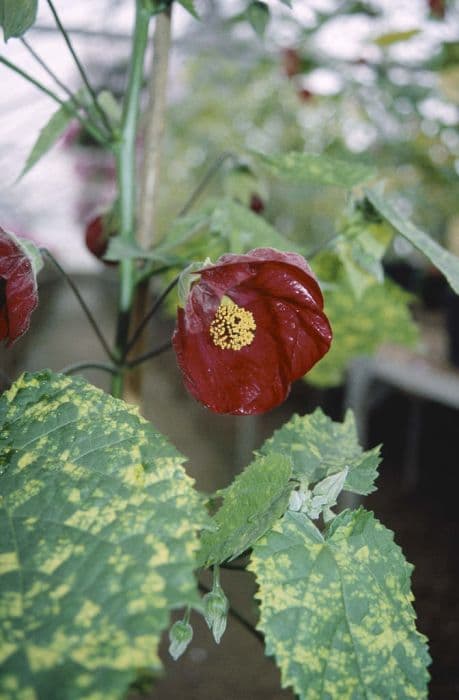
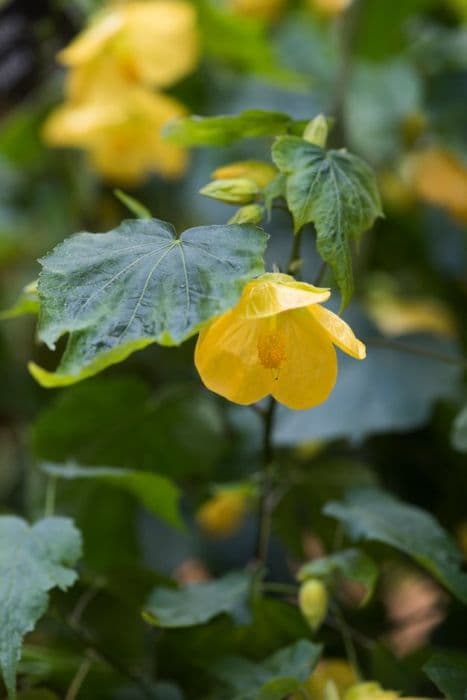
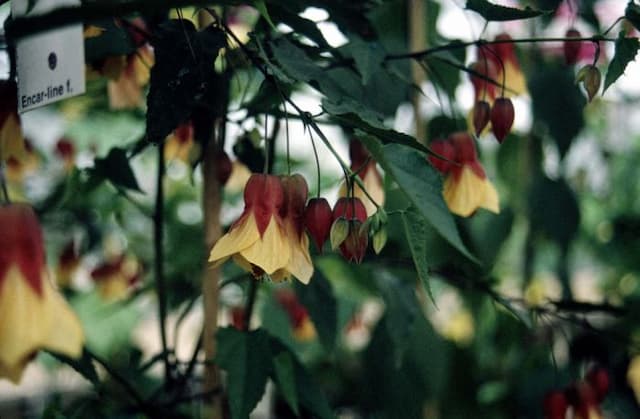
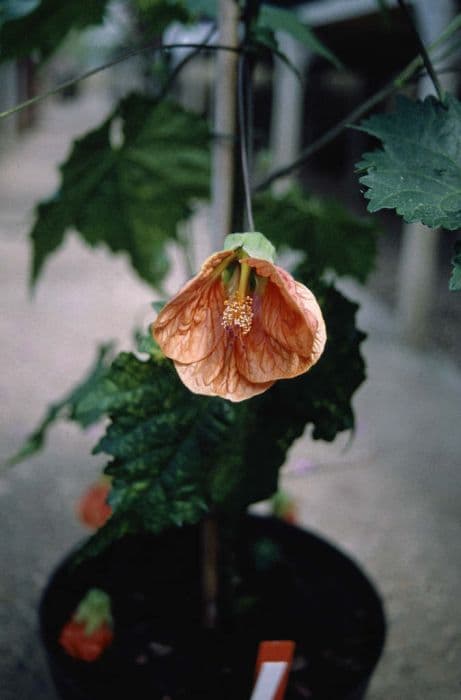
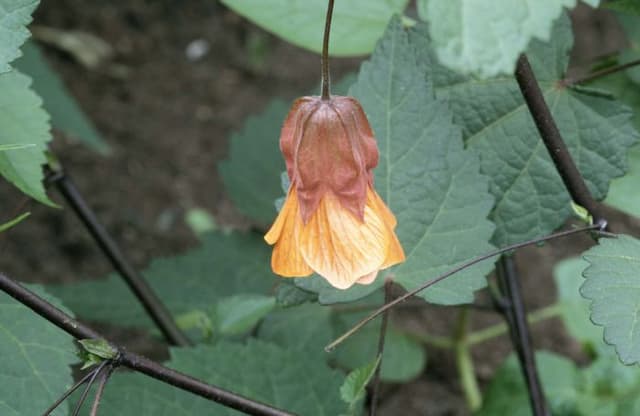

![Abutilon [Yellow Trumpet]](/_next/image?url=https%3A%2F%2Fplants-admin.emdemapps.com%2Fimages%2Fplants%2F%2Fimages%2F604b5caa8b4fb.png&w=640&q=75)

